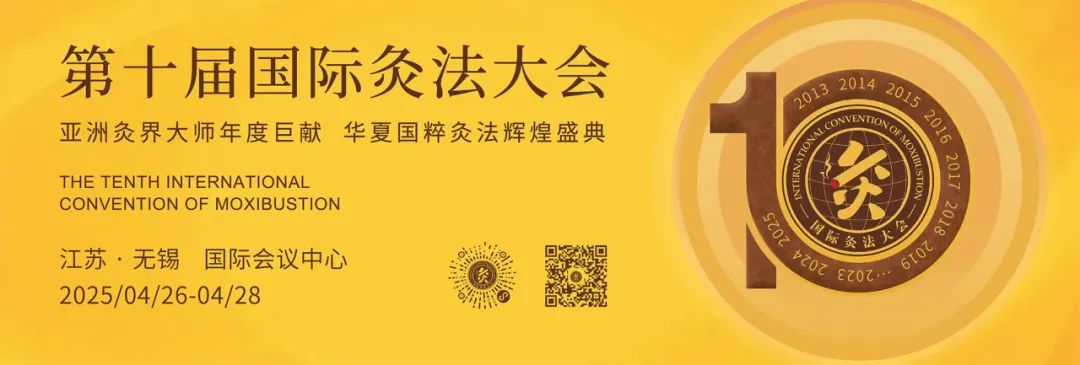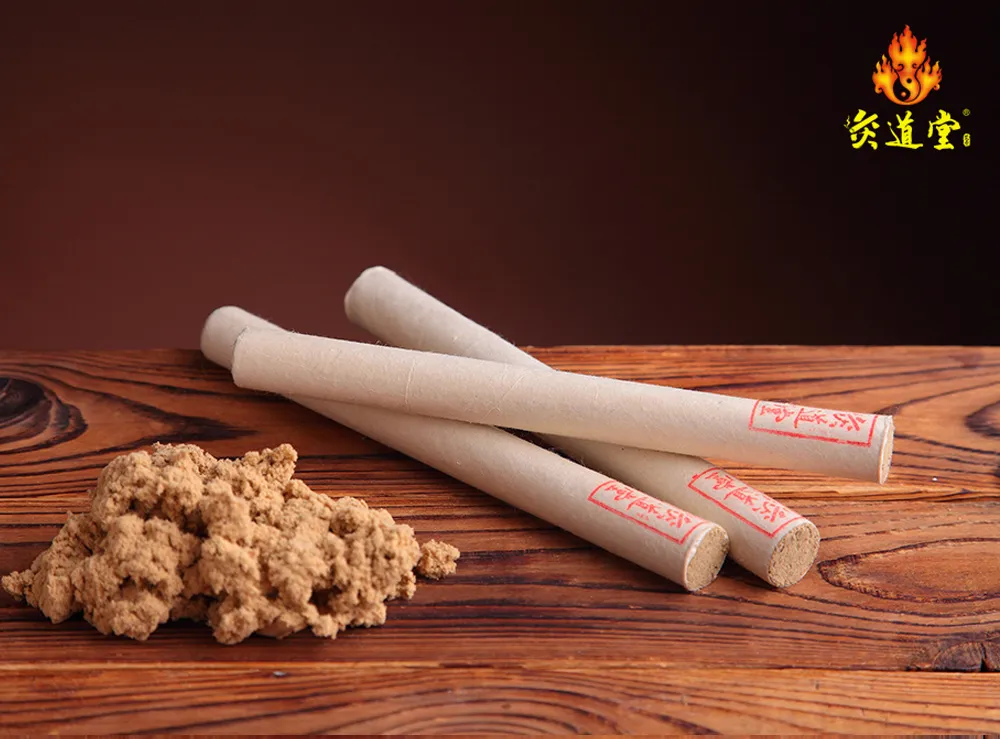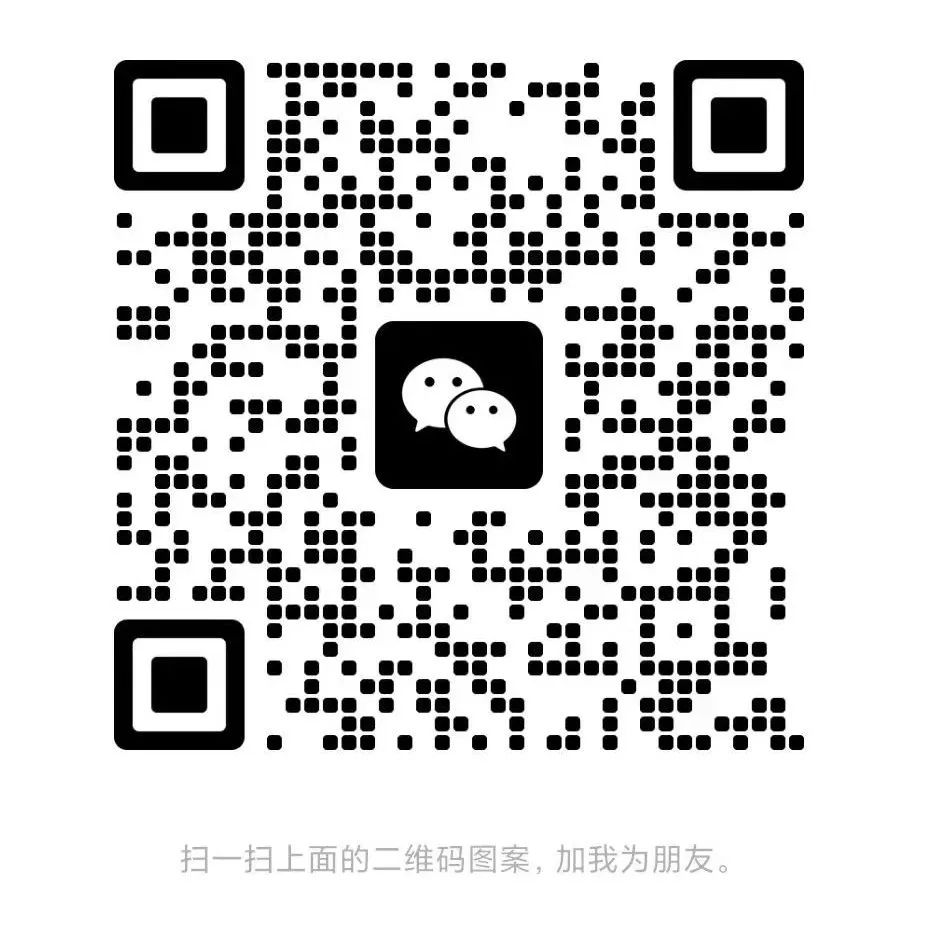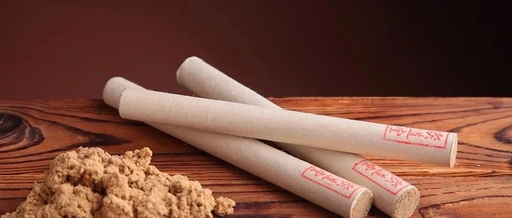
There are always some moxibustion enthusiasts who inquire about the effectiveness of moxibustion:
Everyone says moxibustion is so miraculous, but why have I not seen any results after one month, two months, or even six months?


 Below, I summarize some key points about moxibustion; you can check if you have made any of these mistakes.01Incorrect DiagnosisOne of the characteristics of TCM treatment is diagnosis and treatment based on syndrome differentiation: the same symptoms may require different treatment methods for different individuals, so accurate diagnosis is key to achieving results.Moxibustion, being part of TCM therapy, also requires diagnosis and treatment based on syndrome differentiation. For example, if a person has Yin deficiency with excessive Yang, simply supplementing Yang may worsen the condition, let alone achieve therapeutic effects.Many people’s unsatisfactory moxibustion results are closely related to incorrect diagnosis. Most moxibustion enthusiasts lack systematic TCM knowledge, and the diagnostic skills of observation, listening, inquiry, and pulse-taking are often unfamiliar. Even if they have learned some through the internet, there are bound to be deviations, leading to less than ideal moxibustion results.02Timing of Moxibustion MattersMany moxibustion enthusiasts lack awareness in this regard.When first starting moxibustion, it should follow the principle of gradual progression. The duration and points of moxibustion should start small and increase gradually; one should not blindly perform long sessions from the beginning, such as moxibustion for several hours on multiple points, as these are incorrect practices that can easily lead to adverse reactions (various uncomfortable symptoms).The timing for moxibustion is flexible; it can be done in the morning or afternoon, and generally, there is no need to avoid it based on weather conditions.However, some conditions require attention to the timing of moxibustion, such as insomnia, which can be treated before sleep, and one should avoid moxibustion on Yang-raising points like Dazhui (Du 14) and Baihui (Du 20) at night. For bleeding disorders, moxibustion can be done at any time, and after stopping the bleeding, it should continue for a while to prevent recurrence; avoid moxibustion on an empty stomach or immediately after meals.When there are no health issues, moxibustion can be done 2-3 times a week on health maintenance points, for about 15-20 minutes per point. If there are colds or other ailments, moxibustion can be done on corresponding points for a longer duration, about 20-30 minutes per point.In the absence of health issues, do not perform moxibustion daily, as it can lead to excessive heat (dry mouth, constipation, acne, nosebleeds, etc.).03Do Not Mix Up the Order of MoxibustionThe Qianjin Fang states: “In moxibustion, always start with Yang before Yin… and upper before lower.” This refers to the procedure of moxibustion.If there are corresponding points both above and below, one should moxibustion Yang meridians first, then Yin meridians, starting from the upper body and then the lower body, meaning first the back, then the chest and abdomen, first the head and torso, then the limbs, proceeding in order. This is to draw Yang from above to below, avoiding excessive heat, so the order should not be reversed.If the order is not followed, moxibustion on the head and face may often lead to residual symptoms such as facial heat, dry throat, or uncomfortable sensations. Even if there are no such reactions, moxibustion should still be done from top to bottom, similar to acupuncture, where the order is not mixed up to avoid forgetting.04Be Mindful of the Amount of Moxibustion1. For children, women, thin individuals, the elderly, first-time moxibustion users, and those with reduced function: use smaller moxa cones, thinner moxa sticks, fewer sessions, and fewer points.2. For adults, overweight individuals, robust persons, those with dull sensation, and conditions of excessive function: use larger moxa cones, thicker moxa sticks, and more sessions.3. For the weak or elderly: if they cannot tolerate much moxibustion, use smaller cones and divide the sessions.4. For sensitive individuals: use smaller cones, thinner sticks, and shorter durations.Additionally, for areas like the lower back, abdomen, and shoulders where the skin is thick and the flesh is abundant, and where there is coldness, larger and more numerous moxa cones may be necessary.For the head, face, chest, and distal limbs where the skin is thin and there are many tendons, and for conditions like wind-cold, moxibustion should not be excessive; it should be small and few.05Accuracy of Point SelectionAs mentioned earlier, point selection is crucial.Moxibustion without proper point selection is like walking in the dark without a light.1. For single symptoms or conditions with obvious reaction points, primarily select Ah Shi points (the location of the lesion or corresponding reaction point), such as local pain, dermatitis, eczema, tennis elbow, arthritis, etc.2. Determine if it is a systemic disease.If it is a systemic disease, it generally requires pairing with points that enhance immune function, such as Dazhui (Du 14), Quchi (LI 11), Qihai (Ren 6), Guanyuan (Ren 4), and Zusanli (ST 36). If it is related to blood disorders, additional points like Ge Shu (BL 17) and Xue Hai (SP 10) should be included for a curative effect.For conditions like urticaria, in addition to treating the obvious local Ah Shi points, one should also pair with Dazhui, Quchi, Ge Shu, Qihai, Guanyuan, Xue Hai, and Zusanli.3. Determine if it is a chronic disease.Chronic diseases often damage the body’s vital energy and disrupt organ function due to their long duration, so moxibustion should focus on supporting Yang and preserving the source at Guanyuan and regulating the organs at Zusanli.4. Determine if it is related to organ function.If it is related to organ function, in addition to selecting points near the corresponding organ, one should also pair with the relevant Shu points on the back and Zusanli on the lower limbs.For example, for gastritis, one can select points like Shangwan (Ren 13), Zhongwan (Ren 12), or Xiawan (Ren 10) (based on the location of the symptoms), then pair with Weishu (BL 21) on the back and Zusanli.Similarly, for liver diseases, one can select Qimen (LR 14) near the liver, pair with Ganshu (BL 18) on the back, and Zusanli.5. Are there any experience points?For hernias, use Dazhong; for eye diseases, add Quchi; for hemorrhoids, use Kongzui; for constipation or diarrhea, use Tianshu; for toothaches, use Hegu; for menorrhagia, use Yinbai; for neurological conditions or prolapse, use Baihui.06The Heat of MoxibustionThe heat of moxibustion is extremely important, as it can directly affect the efficacy of moxibustion.Generally, for deficiency and cold conditions, one needs to “tonify,” which involves receiving and absorbing; common methods include suspended moxibustion and warming moxibustion with moxa boxes, using low heat and slow application, allowing the effects to naturally manifest.For excess and heat conditions, one should use the “drain” method, commonly employing sparrow pecking moxibustion to expel excess dampness, cold, and internal heat from the body, thus achieving the goal of eliminating disease.However, excess conditions are easier to treat, while deficiency conditions are more challenging to adjust. Therefore, those with long-standing deficiencies must be prepared for long-term moxibustion.07Effectively Use Indirect Moxibustion for Enhanced Results1. Indirect moxibustion with ginger can be used for all deficiency and cold conditions.Specifically, indirect moxibustion with ginger is suitable for treating diseases caused by insufficient Yang, mainly falling into two categories: one is allergic diseases, such as allergic rhinitis, chronic bronchitis, bronchial asthma, and children’s winter colds; the other is diseases related to deficiency and cold, such as gastric diseases, arthritis, deficiency-cold headaches, and colitis.2. Indirect moxibustion with scallions is very effective for treating postoperative abdominal distension and postpartum urinary retention.The former uses Tianshu (ST 25) and Shangjuxu (ST 37) points, while the latter uses Shenque (Ren 8). Generally, each session requires 7-10 cones of moxa. It can be done daily or every other day for 7-10 days as a course of treatment, and after two courses, significant results can be seen. If consolidation is needed, another course can be performed.3. In modern TCM, indirect moxibustion with salt can be used to treat various abdominal diseases and other conditions.For example, dysentery, gonorrhea, and collapse syndrome. Indirect moxibustion with salt has the effect of reviving Yang and warming the middle, which is beneficial for conditions of Yang collapse, cold limbs, acute abdominal pain, and vomiting and diarrhea.
Below, I summarize some key points about moxibustion; you can check if you have made any of these mistakes.01Incorrect DiagnosisOne of the characteristics of TCM treatment is diagnosis and treatment based on syndrome differentiation: the same symptoms may require different treatment methods for different individuals, so accurate diagnosis is key to achieving results.Moxibustion, being part of TCM therapy, also requires diagnosis and treatment based on syndrome differentiation. For example, if a person has Yin deficiency with excessive Yang, simply supplementing Yang may worsen the condition, let alone achieve therapeutic effects.Many people’s unsatisfactory moxibustion results are closely related to incorrect diagnosis. Most moxibustion enthusiasts lack systematic TCM knowledge, and the diagnostic skills of observation, listening, inquiry, and pulse-taking are often unfamiliar. Even if they have learned some through the internet, there are bound to be deviations, leading to less than ideal moxibustion results.02Timing of Moxibustion MattersMany moxibustion enthusiasts lack awareness in this regard.When first starting moxibustion, it should follow the principle of gradual progression. The duration and points of moxibustion should start small and increase gradually; one should not blindly perform long sessions from the beginning, such as moxibustion for several hours on multiple points, as these are incorrect practices that can easily lead to adverse reactions (various uncomfortable symptoms).The timing for moxibustion is flexible; it can be done in the morning or afternoon, and generally, there is no need to avoid it based on weather conditions.However, some conditions require attention to the timing of moxibustion, such as insomnia, which can be treated before sleep, and one should avoid moxibustion on Yang-raising points like Dazhui (Du 14) and Baihui (Du 20) at night. For bleeding disorders, moxibustion can be done at any time, and after stopping the bleeding, it should continue for a while to prevent recurrence; avoid moxibustion on an empty stomach or immediately after meals.When there are no health issues, moxibustion can be done 2-3 times a week on health maintenance points, for about 15-20 minutes per point. If there are colds or other ailments, moxibustion can be done on corresponding points for a longer duration, about 20-30 minutes per point.In the absence of health issues, do not perform moxibustion daily, as it can lead to excessive heat (dry mouth, constipation, acne, nosebleeds, etc.).03Do Not Mix Up the Order of MoxibustionThe Qianjin Fang states: “In moxibustion, always start with Yang before Yin… and upper before lower.” This refers to the procedure of moxibustion.If there are corresponding points both above and below, one should moxibustion Yang meridians first, then Yin meridians, starting from the upper body and then the lower body, meaning first the back, then the chest and abdomen, first the head and torso, then the limbs, proceeding in order. This is to draw Yang from above to below, avoiding excessive heat, so the order should not be reversed.If the order is not followed, moxibustion on the head and face may often lead to residual symptoms such as facial heat, dry throat, or uncomfortable sensations. Even if there are no such reactions, moxibustion should still be done from top to bottom, similar to acupuncture, where the order is not mixed up to avoid forgetting.04Be Mindful of the Amount of Moxibustion1. For children, women, thin individuals, the elderly, first-time moxibustion users, and those with reduced function: use smaller moxa cones, thinner moxa sticks, fewer sessions, and fewer points.2. For adults, overweight individuals, robust persons, those with dull sensation, and conditions of excessive function: use larger moxa cones, thicker moxa sticks, and more sessions.3. For the weak or elderly: if they cannot tolerate much moxibustion, use smaller cones and divide the sessions.4. For sensitive individuals: use smaller cones, thinner sticks, and shorter durations.Additionally, for areas like the lower back, abdomen, and shoulders where the skin is thick and the flesh is abundant, and where there is coldness, larger and more numerous moxa cones may be necessary.For the head, face, chest, and distal limbs where the skin is thin and there are many tendons, and for conditions like wind-cold, moxibustion should not be excessive; it should be small and few.05Accuracy of Point SelectionAs mentioned earlier, point selection is crucial.Moxibustion without proper point selection is like walking in the dark without a light.1. For single symptoms or conditions with obvious reaction points, primarily select Ah Shi points (the location of the lesion or corresponding reaction point), such as local pain, dermatitis, eczema, tennis elbow, arthritis, etc.2. Determine if it is a systemic disease.If it is a systemic disease, it generally requires pairing with points that enhance immune function, such as Dazhui (Du 14), Quchi (LI 11), Qihai (Ren 6), Guanyuan (Ren 4), and Zusanli (ST 36). If it is related to blood disorders, additional points like Ge Shu (BL 17) and Xue Hai (SP 10) should be included for a curative effect.For conditions like urticaria, in addition to treating the obvious local Ah Shi points, one should also pair with Dazhui, Quchi, Ge Shu, Qihai, Guanyuan, Xue Hai, and Zusanli.3. Determine if it is a chronic disease.Chronic diseases often damage the body’s vital energy and disrupt organ function due to their long duration, so moxibustion should focus on supporting Yang and preserving the source at Guanyuan and regulating the organs at Zusanli.4. Determine if it is related to organ function.If it is related to organ function, in addition to selecting points near the corresponding organ, one should also pair with the relevant Shu points on the back and Zusanli on the lower limbs.For example, for gastritis, one can select points like Shangwan (Ren 13), Zhongwan (Ren 12), or Xiawan (Ren 10) (based on the location of the symptoms), then pair with Weishu (BL 21) on the back and Zusanli.Similarly, for liver diseases, one can select Qimen (LR 14) near the liver, pair with Ganshu (BL 18) on the back, and Zusanli.5. Are there any experience points?For hernias, use Dazhong; for eye diseases, add Quchi; for hemorrhoids, use Kongzui; for constipation or diarrhea, use Tianshu; for toothaches, use Hegu; for menorrhagia, use Yinbai; for neurological conditions or prolapse, use Baihui.06The Heat of MoxibustionThe heat of moxibustion is extremely important, as it can directly affect the efficacy of moxibustion.Generally, for deficiency and cold conditions, one needs to “tonify,” which involves receiving and absorbing; common methods include suspended moxibustion and warming moxibustion with moxa boxes, using low heat and slow application, allowing the effects to naturally manifest.For excess and heat conditions, one should use the “drain” method, commonly employing sparrow pecking moxibustion to expel excess dampness, cold, and internal heat from the body, thus achieving the goal of eliminating disease.However, excess conditions are easier to treat, while deficiency conditions are more challenging to adjust. Therefore, those with long-standing deficiencies must be prepared for long-term moxibustion.07Effectively Use Indirect Moxibustion for Enhanced Results1. Indirect moxibustion with ginger can be used for all deficiency and cold conditions.Specifically, indirect moxibustion with ginger is suitable for treating diseases caused by insufficient Yang, mainly falling into two categories: one is allergic diseases, such as allergic rhinitis, chronic bronchitis, bronchial asthma, and children’s winter colds; the other is diseases related to deficiency and cold, such as gastric diseases, arthritis, deficiency-cold headaches, and colitis.2. Indirect moxibustion with scallions is very effective for treating postoperative abdominal distension and postpartum urinary retention.The former uses Tianshu (ST 25) and Shangjuxu (ST 37) points, while the latter uses Shenque (Ren 8). Generally, each session requires 7-10 cones of moxa. It can be done daily or every other day for 7-10 days as a course of treatment, and after two courses, significant results can be seen. If consolidation is needed, another course can be performed.3. In modern TCM, indirect moxibustion with salt can be used to treat various abdominal diseases and other conditions.For example, dysentery, gonorrhea, and collapse syndrome. Indirect moxibustion with salt has the effect of reviving Yang and warming the middle, which is beneficial for conditions of Yang collapse, cold limbs, acute abdominal pain, and vomiting and diarrhea.
Scan to Join >> National Moxibustion Enthusiasts Club

